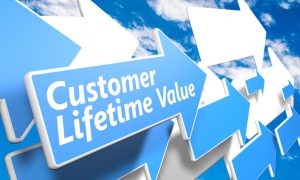Assessing the Lifetime Value of Your Customers
 Customer Lifetime Value (CLV) is a critical concept for virtually every organization that’s customer-centric. At a granular level, it helps companies decide which tactics to use for which customer. At a more macro level, it is the key ingredient in calculating customer equity. Yet, it’s one of the most overlooked and least understood metrics in business — even though it’s one of the easiest to figure out.
Customer Lifetime Value (CLV) is a critical concept for virtually every organization that’s customer-centric. At a granular level, it helps companies decide which tactics to use for which customer. At a more macro level, it is the key ingredient in calculating customer equity. Yet, it’s one of the most overlooked and least understood metrics in business — even though it’s one of the easiest to figure out.
Why is this particular number so important? Mainly because it will give you an idea of how much repeat business you can expect from a particular customer, which in turn will help you decide how much you’re willing to spend to “buy” that customer for your business. Once you know how frequently a customer buys and how much he or she spends, you will better understand how to allocate your resources in terms of customer retention programs and other services you’ll need to not only keep your customers, but keep them happy.
Your Biggest Customers May Not Be Your Most Profitable Customers
Many companies assume that customers with the highest sales volume are the most profitable. But often, the highest-volume customers also exert the greatest bargaining power, thus enjoying the lowest prices at a high level of pre- and after-sales service. Low-volume customers, on the other hand, generally pay the highest prices but may absorb even more sales and service resources than high- volume customers. As a result, medium-volume customers tend to be the most profitable.
Since not all customers are financially attractive to your business, it is crucial that their profitability be determined and that resources be allocated according to their lifetime value. It is argued that customer relationships are viewed as investment decisions and customers as generators of revenue streams. But customer relationships also generate costs. As a result, all revenues and costs pertaining to a customer relationship should be assessed in order to measure lifetime value most accurately.
Unfortunately, standard accounting systems focus on periods instead of individual customers or customer groups. If overhead costs are allocated on a volume basis, customer profitability is skewed by penalizing the ‘‘easy’’ customers and favoring the ‘‘demanding’’ ones. Thus, in many cases, low-maintenance customers subsidize those with high service demands.
Applying Analytics To Yield A Clearer Picture of Customer Value
Customer analytics can help you gain a clearer measure of the true value of your customer relationships by enabling you to:
- Determine lifetime sales by customer and customer type to identify loyal customers and best market opportunities
- Identify and rank customers who are considered “high value” based on discount level and gross margin, while uncovering areas where discounting is cutting into profits
- Evaluate how sales revenues and gross profits are trending by customer and channel to anticipate future sales and profits and focus retention efforts on customers whose purchases have decreased
- Isolate the effect of freight and handling costs on customer profitability and discover low profit customers that may require more cost effective shipping methods
- Perform activity-based management analysis to determine the true net profitability by customer
- Then, predict what the lifetime value of each customer will be based on their overall historical value and other metrics like RFM – or Recency, Frequency and Monetary Value of their purchases
For many companies, their whole business revolves around trying to understand which customers are worth keeping and which aren’t,” says Wharton marketing professor Peter Fader. “This has led managers from a broad cross section of industries to seek out more refined measures of CLV, using data-intensive procedures to identify top customers in terms of their likely future purchasing patterns.”
Having the ability to accurately assess the lifetime value of customers using both historical metrics and predictive analytics that forecast future value is a critical component of any customer management strategy.